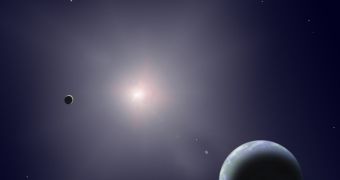The current standard models postulate that quarks and leptons are the basic building blocks of all matter. However, in the 1970s, some scientists argued that quarks are not fundamental particles, but are themselves composed of other smaller particles called preons. Though the preon particles sparked a lot of excitement in the physics community during the 1980s, the particle colliders studying the problem haven't been able to detect them, due to limitations of current technology.
A material about possible strategies to future detect the elusive particles, which will be released next month, describes two methods of detecting them in space rather than in particle colliders. The team proposing the method, believes that preons could exist in structures of some kind of preon nuggets, that could account for part of the dark matter. Though the scientific community mostly agree that preons do not exist, or may evade the detection method, the team of scientists that created the two strategies have received recognition for their work, and for looking at new methods of detecting particles without the help of conventional physics.
Though they were originally proposed as the basic particles that compose the quarks and leptons, the detection method proposed by Fredrik Sandin and Johan Hansson, involves the existence of objects composed entirely of preons in a free state, that could range in sizes from a pea to the size of a football, which are extremely compact, and could have a mass comparable to that of the Moon. The scientists believe that such objects might have formed in the early stage of universe birth, when they could have existed as one of the forms of dark matter that only interacted with normal matter through gravity.
Due to the presumption that preon nuggets interact with normal matter only by gravitation, the team suggests using a similar method to detect 'non-feeding' black holes, where background gamma rays emitted by a distant source would be bent and distorted by the presence of a close preon nugget.
By calculating the effect that a nugget, with a mass between 1015 to 1023 kilograms, would have on gamma-ray light, they found the relation describing the preon nuggets signature. They have applied the signature to some of the unexplained gamma-ray burst distortion coming from space, and have found possible such preon nuggets.
The second detection method involves the presumption that some preon nuggets might exist in the close orbit of Earth and could eventually merge with the atmosphere creating high frequency gravity wave. However, this technique presents a problem, namely the fact that the gravitational wave has not yet been observed. Such objects striking the Earth and the Moon could be observed by using a frequency detector as high as 100 megahertz.
A third backup technique considers studying the seismic records of the Earth and Moon.

 14 DAY TRIAL //
14 DAY TRIAL //